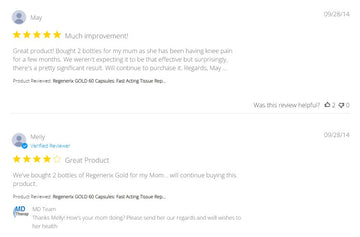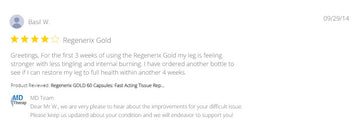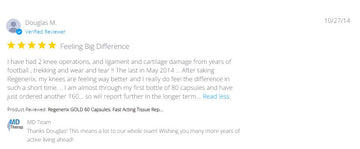Thoracic Extension Over a Foam Roller: Unlock Your Mid-Back to Help Shoulders & Neck
由 MD therapeutics 上 Aug 17, 2025
Why thoracic extension helps (the principles)
-
Restores mid-back mobility for pain-free shoulder motion. Stiff thoracic segments force the neck and low back to compensate and can pinch the subacromial space. Gentle extension over a roller improves scapular upward rotation and glenohumeral mechanics—useful for rotator-cuff irritation and postural shoulder pain.
-
Synovial “wash” & rib mechanics. Segmental extension glides facet joints and costovertebral joints, circulating synovial fluid and easing morning or desk-work stiffness.
-
Breath + diaphragm synergy. Opening the rib cage improves diaphragmatic excursion, reducing paraspinal guarding and perceived neck/upper-back tension.
-
Downstream effects. Better thoracic extension often cleans up overhead reach, driving, desk posture, and even arm swing during walking.
How to do it (safe, range-aware):
-
Lie on your back with a longitudinal foam roller (spine aligned) or place the roller crosswise under your mid-back (start just below the shoulder blades).
-
Support your head with hands; elbows slightly in.
-
Exhale as you gently drape over the roller; inhale to return to neutral. Avoid cranking the neck or over-arching the low back.
-
Move the roller 1–2 vertebral levels and repeat.
Dosage: 1–2 sets of 6–10 slow reps, 1–2×/day or as warm-up.
Options: Place a pillow under the head, use a softer roller, or do a supported towel roll for sensitive spines.
Caution: If you have diagnosed osteoporosis, acute fracture, or new trauma, use very small ranges and clear with your clinician.
Limits of exercise alone
-
Doesn’t correct systemic drivers (sleep, stress, diet, metabolic health).
-
Flares cap training load; people under-load or stop when symptoms spike.
-
Many need targeted strength (lower traps, serratus, rotator cuff) and tissue capacity work in addition to mobility.
-
Connective tissues remodel slowly (months), so consistency plus recovery and nutrition beats “mobility only.”
Why add nutritional correction
-
Improve circulation so post-session tissues get oxygen and nutrients.
-
Promote repair with structural inputs (e.g., collagen peptides, hyaluronic acid).
-
Reduce excessive inflammation to keep day-to-day practice tolerable.
-
Avoid tissue damage by buffering oxidative and catabolic stress from training.
Botanicals & nutrients often paired with joint-support programs
(Blends traditional lore with published research; evidence ranges from promising to mixed. Check interactions and personal suitability with your clinician.)
Ginger (Zingiber officinale)
-
Traditional: Ayurveda & East Asian medicine for circulation and “wind-damp” aches.
-
Research: Standardized ginger has shown modest osteoarthritis symptom support in some trials (results vary with dose/extract).
Turmeric / Curcumin (Curcuma longa)
-
Traditional: Core Ayurvedic spice for joint comfort.
-
Research: Bioavailability-enhanced curcumin has reduced knee-OA pain and improved function versus placebo in multiple studies.
-
Food reality: Culinary turmeric contains little curcumin—hard to hit study-like intakes via meals alone.
Boswellia / Frankincense (Boswellia serrata)
-
Traditional: Ayurveda’s shallaki resin for joints.
-
Research: Standardized extracts have demonstrated improvements in pain and function in OA cohorts.
Winter Cherry / Ashwagandha (Withania somnifera)
-
Traditional: Adaptogen for resilience and musculoskeletal comfort.
-
Research: Trials suggest immunomodulatory effects and symptom support in knee-pain cohorts; may aid training tolerance.
Collagen Peptides (Type II emphasis)
-
Concept: Supply peptides that may support cartilage metabolism and tendon/ligament integrity—useful alongside mobility and strengthening.
Hyaluronic Acid (oral)
-
Concept: Contributes to lubrication/viscosity and smoother joint motion; oral forms are used to support comfort and function.
Cat’s Claw (Uncaria spp.)
-
Traditional: Peruvian/Amazonian remedy for “rheumatism.”
-
Research: Placebo-controlled work reports short-term improvements in activity-related pain; broader evidence is still developing.
The practicality problem
-
Food-only dosing is tough: Daily, research-like intakes of curcumin or ginger via meals are impractical for most people.
-
Pill burden & cost add up: Buying six–seven separate products (ginger, turmeric, boswellia, ashwagandha, collagen, HA, cat’s claw) multiplies capsules and monthly spend compared with one comprehensive formula.
A convenient all-in-one option: Regenerix Gold™
Prefer thoracic mobility + nutrition without juggling bottles?
-
What’s inside: Hydrolyzed Type II Collagen, Hyaluronic Acid, and a proprietary blend of Ginger, Turmeric, Frankincense (Boswellia), Cat’s Claw, and Winter Cherry (Ashwagandha)—the same seven ingredients discussed above—combined to promote healthy joint and muscle function and support everyday recovery.
-
Dosing: 2–3 capsules daily.
-
Price: $98 a bottle.
-
Why it fits here: One product covering seven evidence-linked ingredients is simpler—and typically more cost-effective—than buying 5–7 separate supplements.
-
Track record: Recommended by doctors and physical therapists internationally for about a decade (individual clinician views vary).
Supplements support healthy function; they don’t diagnose, treat, or cure disease. Check interactions (e.g., anticoagulants with turmeric/ginger/boswellia) and suitability with your clinician.
This week’s mini-plan
-
Daily (or warm-ups): Foam-roller thoracic extensions, 1–2 sets × 6–10 slow reps, tiny ranges first.
-
2–3×/wk strength pairings:
-
Wall angels (stay ribs down),
-
Scapular retractions (band),
-
Prone Y-T-W (micro-range).
-
-
If symptoms spike: Shrink range by 30–50%, switch to towel-roll support, and re-progress when discomfort settles within 24 h.



